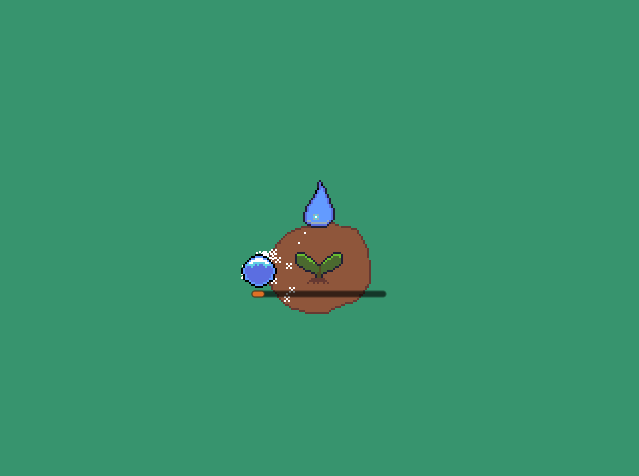
The Spring Lisp Game Jam 2023 submission deadline has now passed and we are now in the rating period. I was a co-host of the jam alongside technomancy but he did all the real work setting everything up. There were 30 submissions this time around, which I believe is a new record for our little jam! This particular jam was a special one for me. I not only submitted a game built with Chickadee but I also got paid to work on another entry as part of my work at the Spritely Institute!
If there’s a downside to doing a game jam as part of your day job, it’s that there isn’t much time to hack on a game just for funsies. Woe is me, right? I really wanted to submit something built with Chickadee, though, not only to get some experience making things with it but also to validate that the whole stack is actually improving over time. So, I did my best to scope my ambitions way down and create the simplest game I could think of that I could still be happy to share. That game is Super Bloom! You play as a little bouncing circle, I guess, that is tasked with helping a young sunflower seedling grow and bloom. You need to water it and destroy the dirt balls (which my limited art abilities made look more like meatballs) that want to kill it for some reason unknown even to me. It’s a very minimal game. Water is used both to grow the flower and to attack the dirt balls. The only keys used are the arrow keys and Z. Most of the work happened on the weekends at the start and end of the jam. I’m quite happy with how it came out given how little time I spent making it! I wish I could have added more variety to the enemy spawn patterns and relied less on random placement, but the result is OK.
In addition to using Chickadee, this game served as another opportunity to test drive my still-unreleased game engine named Catbird. There are still several rough edges but things are definitely headed in the right direction. The new in-engine REPL, as crude as it is, proved very useful for evaluating small expressions quickly without having to switch back to Emacs. Much of the game was developed live at the REPL from within Emacs, while the game was running, except for when I encountered engine bugs or needed to do a big refactor or something. Catbird auto-reloads non-code assets (images, sound, etc.) so it was quick and easy to check out how sprite updates looked inside the game. The biggest change in my tools this time around was using Libresprite instead of GIMP for the pixel art. I had a great experience with Libresprite and intend to stick with it for future game dev projects.
For Spritely, Christine and I worked on a distributed, networked virtual world prototype called Fantasary. I spent a lot of time on this and even though it doesn’t have much in the way of gameplay it is a very important prototype for us and if you want to know more about it then keep an eye on the Spritely blog because we will be writing about all the details there! But wait, there’s more! Spritely contributed not only one, but two entries to the jam. Check out Wireworld for the WASM-4 fantasy console, made using the Guile Hoot WebAssembly toolchain that Spritely is developing. There will be more details about this one on the Spritely blog, as well.
As far as I can tell, there are no other entries that used Guile, but the Scheme family was well represented (despite what I originally thought when I first published this) with other entries using Racket, Chicken, and Kawa. I haven’t done a real tally, but it seems that Common Lisp and Fennel (the Lisp that compiles to Lua) were the most common choices, overall.
Congrats to all jammers that participated, whether you completed your entry or not. I’ve been following the Lisp Game Jam for years and it keeps getting better and better and seeing more and more people catch the Lisp bug (or curse, depending on your perspective) is exciting!